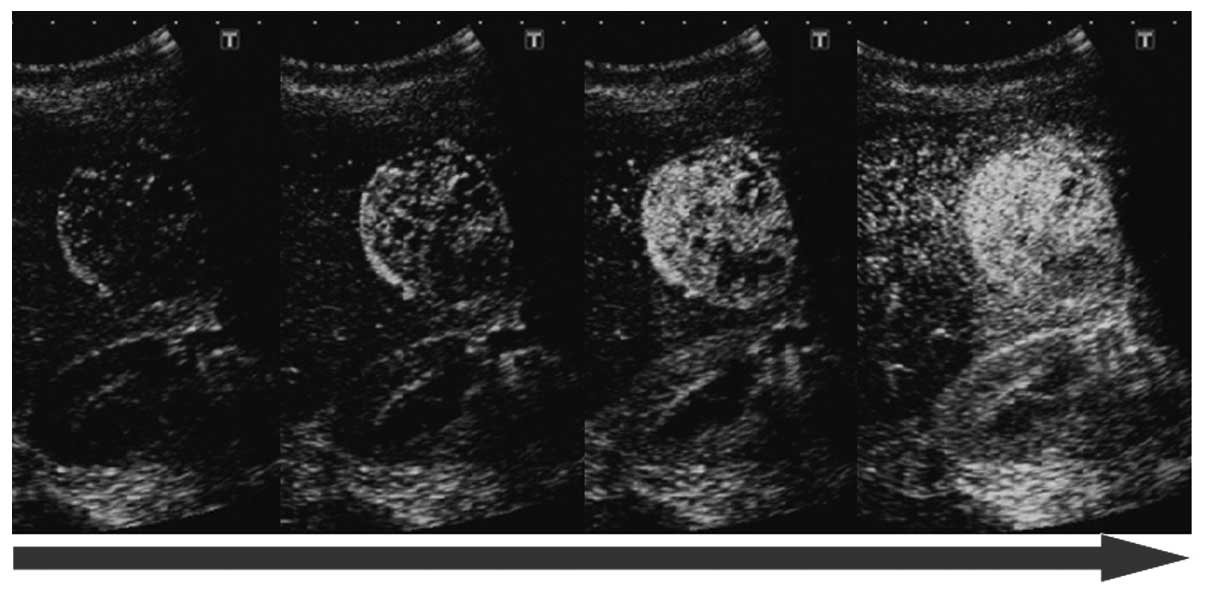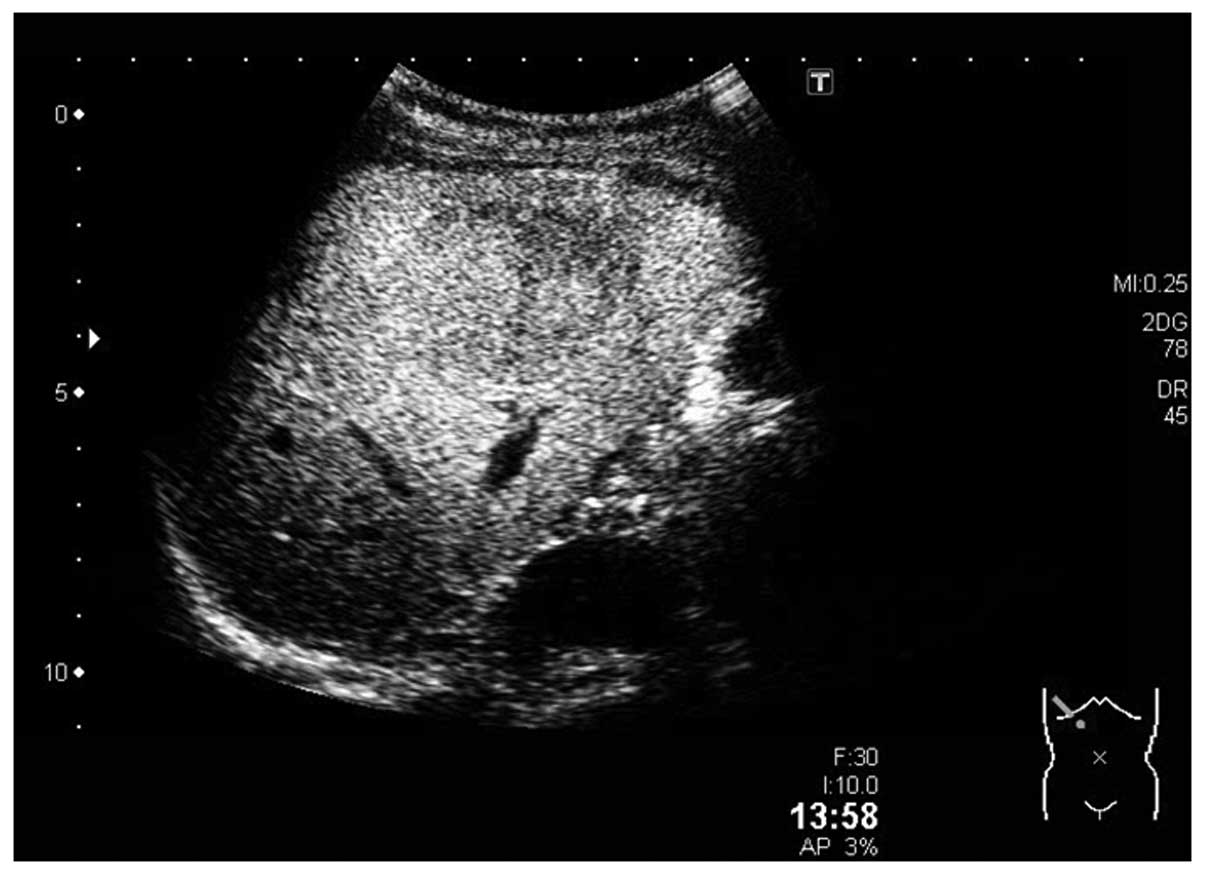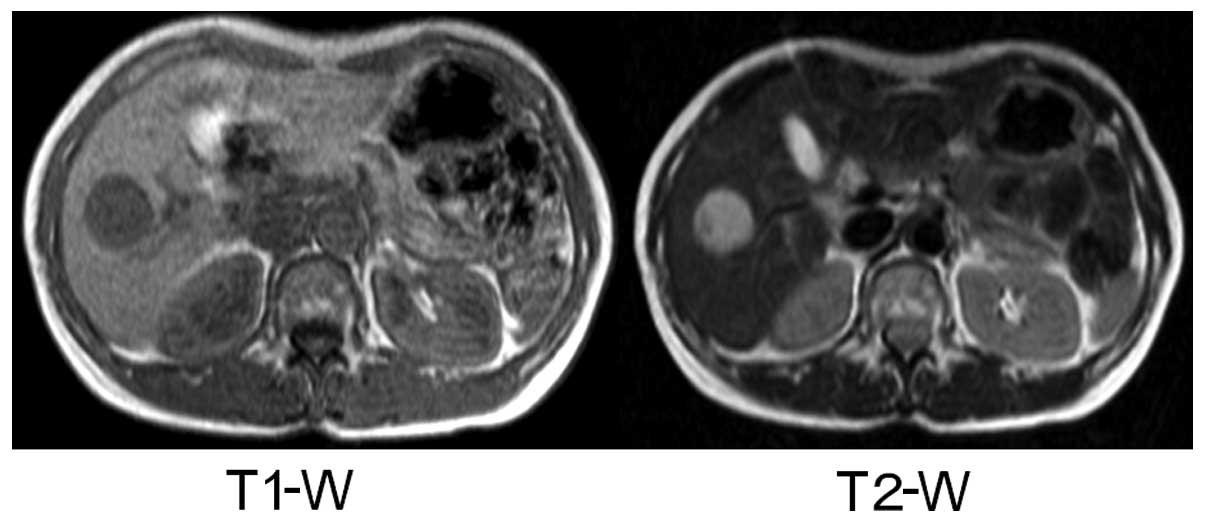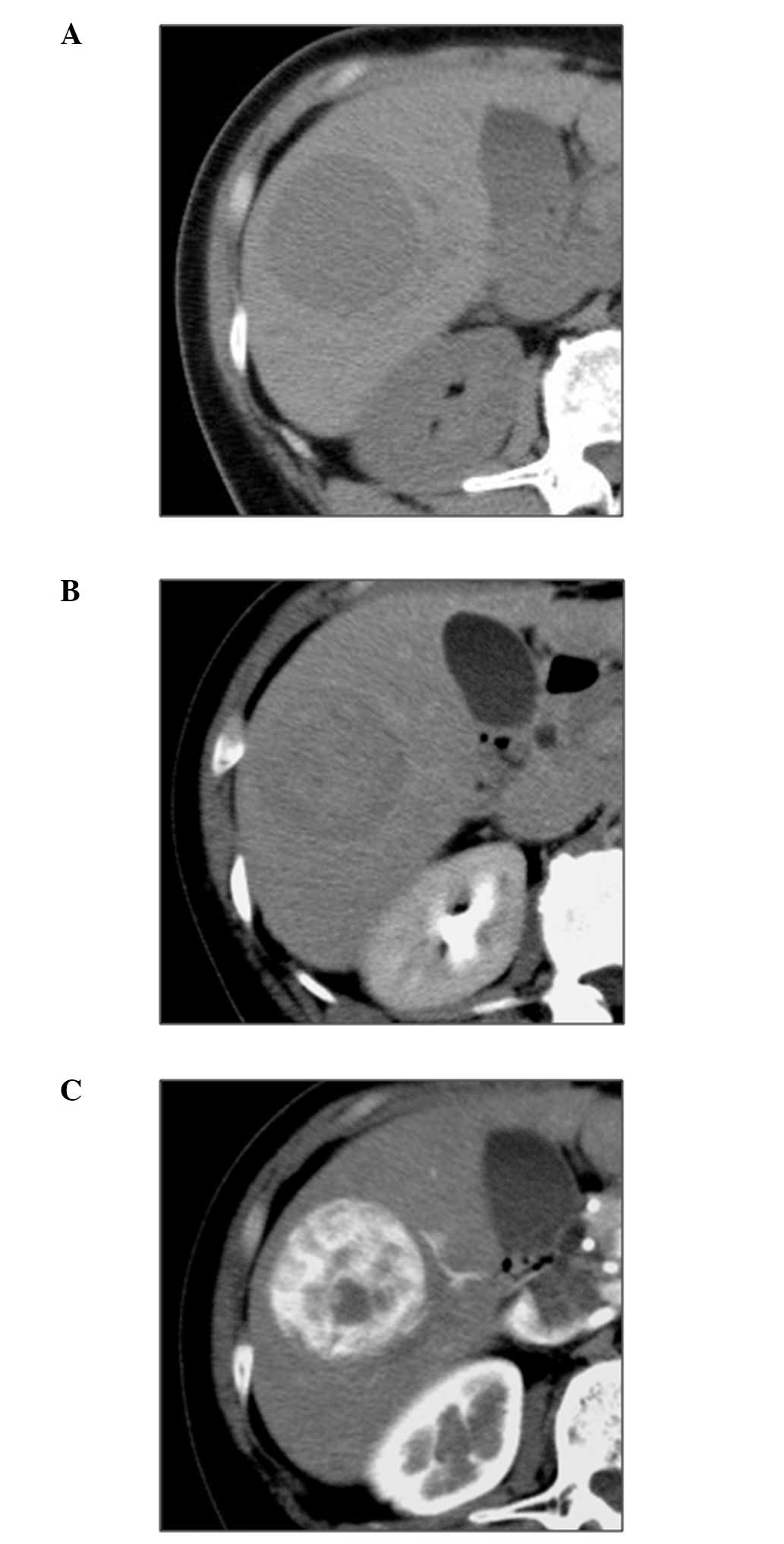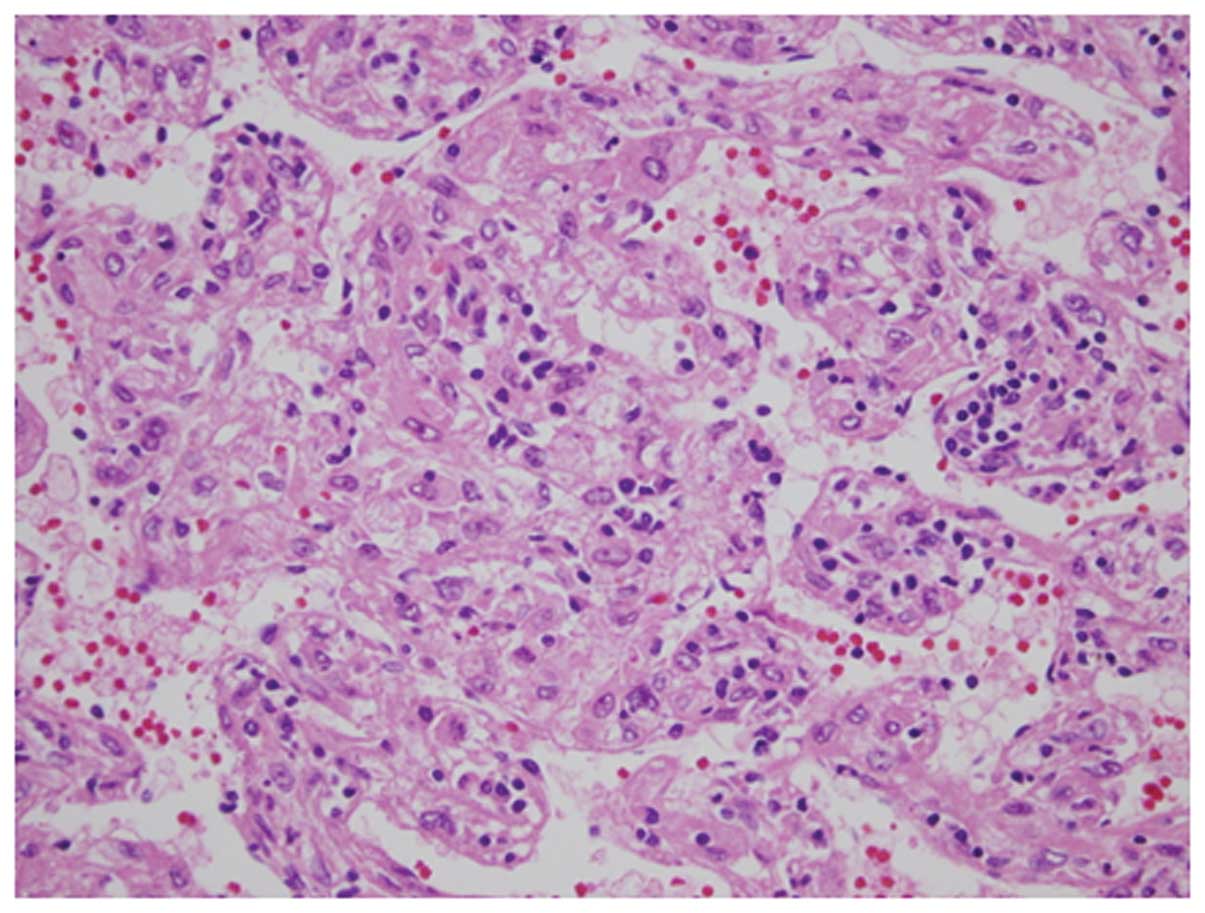A case of poorly differentiated hepatocellular carcinoma with intriguing ultrasonography findings
- Authors:
- Published online on: June 19, 2012 https://doi.org/10.3892/ol.2012.764
- Pages: 393-397
Metrics:
Total
Views: 0 (Spandidos Publications: | PMC Statistics:
)
Total PDF Downloads: 0 (Spandidos Publications: | PMC Statistics:
)
Abstract
A 60‑year‑old female was referred to the Toho University Omori Medical Center due to ultrasonography findings revealing a notable hepatic mass. The 44x32 mm isoechoic mass had a high‑echo band along the margin in the liver. Contrast‑enhanced ultrasonography (CEUS) with Sonazoid detected an enhancement pattern extending from the outer periphery to the inside of the mass in the vascular phase and a pattern similar to that of surrounding hepatic tissue in the post‑vascular phase. High‑flow hepatic hemangioma was suspected due to the hyperechoic rim‑like high-echo band, the oval shape and the CEUS findings. However, computed tomography revealed a hypervascular hepatocellular carcinoma (HCC) pattern and the patient underwent surgery. Histopathological findings revealed poorly differentiated HCC. As poorly and moderately differentiated HCC types are conventionally classified as ‘hypervascular HCC’, few detailed ultrasonography (US) studies of poorly differentiated HCC are available. US characteristics of hypervascular HCC include the presence of a halo (hypoechoic band) around the lesion and reduced signal intensity in the post‑vascular phase of CEUS. US in the patient revealed a mass with a hyperechoic band and a signal intensity in the post‑vascular phase of CEUS that was almost identical to that of the surrounding liver parenchyma. These findings suggest poorly differentiated HCC and indicate that further research on hypervascular HCC is required.




